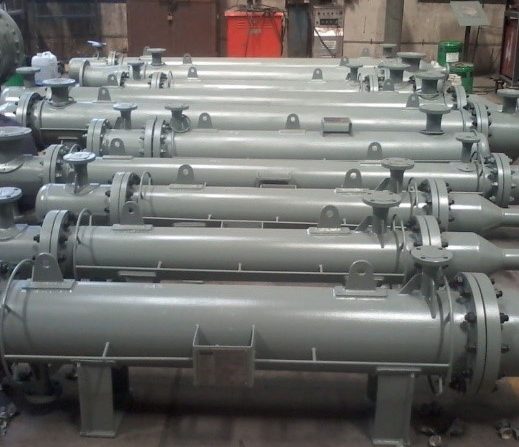SHELL AND TUBE HEAT EXCHANGER:
One type of heat exchanger design is a shell & tube heat exchanger. It is suitable for higher-pressure applications and is the most prevalent type of heat exchanger found in oil refineries and other sizable chemical processes. This kind of heat exchanger, as its name suggests, is made up of a shell (a huge pressure vessel) that has a collection of tubes inside of it. To transfer heat between the two fluids, one fluid flows through the tubes while a second fluid flows over the tubes (via the shell). The group of tubes is known as a tube bundle and can include several kinds of tubes, such as plain, longitudinally finned, etc.
HOW DOES IT WORKS?
The heat exchanger is filled with two fluids that have different starting temperatures. One flows inside the shell while the other flows outside the tubes. Through the tube walls, heat is transferred from one fluid to another. Either from the tube side to the shell side or the opposite. On either the shell side or the tube side, the fluids might be either liquids or gases. It is necessary to use a big heat transfer area. And numerous tubes in order to transmit heat effectively. Waste heat can be utilized in this way. This is a productive method of energy conservation.
ADVANTAGES
- One of the major benefits of using a this heat exchanger is that they are frequently simple to maintain, especially with models that come with a floating tube bundle. (where the tube plates and the outer shell are not joined by welding).
- All pressure applications are possible thanks to the housing’s cylinder shape, which is very pressure-resistant.
To buy Shell & Tube Heat exchanger Click Here!!!
